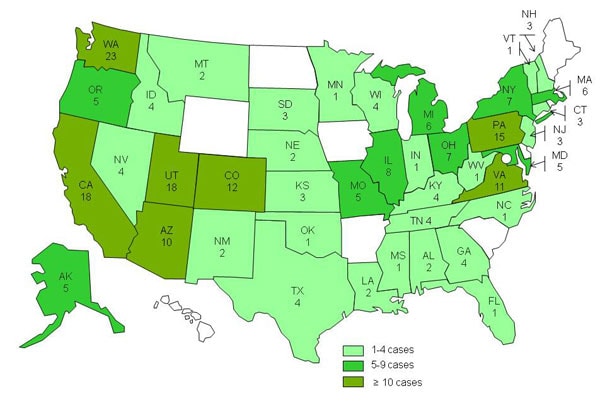 |
| Calendar by Allergy New Zealand |
New Zealand has mild temperatures, moderately high rainfall, and many hours of sunshine. The sunniest city is Tauranga, the wettest - Wellington, the driest Christchurch and the warmest city is Auckland.
New Zealand has relatively little air pollution and very strong UV rays during the summer months.
The country has a unique variety of native flora, mostly evergreen. The introduced plants are the main source of pollen allergies. Rye is the most troublesome plant and the major cause of springtime hay fever. The pollen season starts about one month earlier at the top of the North Island than the bottom of the south Island. Pollen concentrations are slightly lower in coastal areas. Inland pastoral areas such as Hamilton and Palmerston North, can have relatively severe allergy seasons. In Auckland the main pollen season is between October and February, and - unlike Europe and USA - is not well defined.
People of New Zealand, however, are not as affected by humidity and temperature changes as Western Europe is [1]. Similar to the rest of the world [2], prenatal and early life exposure to pollen can offer protection against asthma, respiratory allergy and eczema, but continued exposure may be required to maintain optimal protection [3].
1. Asher MI, Stewart AW, Mallol J, Montefort S, Lai CK, Aït-Khaled N, Odhiambo J; ISAAC Phase One Study Group. Which population level environmental factors are associated with asthma, rhinoconjunctivitis and eczema? Review of the ecological analyses of ISAAC Phase One. Respir Res. 2010 Jan 21;11:8.
2. Burr ML, Emberlin JC, Treu R, Cheng S, Pearce NE; ISAAC Phase One Study Group.
Pollen counts in relation to the prevalence of allergic rhinoconjunctivitis, asthma and atopic eczema in the International Study of Asthma and Allergies in Childhood (ISAAC). Clin Exp Allergy. 2003 Dec;33(12):1675-80.
3. Douwes J, Cheng S, Travier N, Cohet C, Niesink A, McKenzie J, Cunningham C, Le Gros G, von Mutius E, Pearce N. Farm exposure in utero may protect against asthma, hay fever and eczema. Eur Respir J. 2008 Sep;32(3):603-11. Epub 2008 Apr 30.












I wouldn ‘ t so much call it ” allergies ” as I would call it ” polluted air ” . I ‘ m sure big cities are worse , the ones I ‘ ve been in are anyways , but Kihei is not the place to come for fresh air . If you had to be on Maui , I’ d suggest something Hana way , I ‘d LOVE to be there myself , but we ( gf and myself ) are not bohemian millionaires , nor are we locals , so nix that idea . If you have the money it ‘s the place to be …..
unless if you have problems with mold . In which case , Kaua ‘ i , and Hilo area would be bad for you …. they both have a very wet climate , as I ‘ m sure you know Hana area has as well ( although not nearly as wet ) .
My ” best ” suggestion for you two , I ‘ d guess something on Oahu , away from the city for sure , maybe towards North Shore , although somewhere thats not tooo wet . Oahu doesnt seem to get the vog as badly ( although they did get a spell of it around the time of the World Series last year ) as islands that are closer to Big Island …..
by the way , your husband prob got sick between May and August because of the wind pattern at that time of the year …. pulling vog from Big Island .
Lastly , I am a runner , moved from Minnesota , and the amount of stamina I ‘ ve lost in the year and a half that I ‘ ve been here ………wow .( And I run at night mostly. ) They burned here on Friday and now several people at work ( today is Sunday ) are sick …… I guess my points are 1.) money always tries to blame people for their ” allergies ” as they are sickening people ; 2.) there are better places out here than Kihei.
by AllergyNurse
I’m on Maui now. Different grasses but the Waddle trees here leave enough pollen to coat a house! Shorter season than grass though, and not quite as bad. Cost of living here is killing me instead!